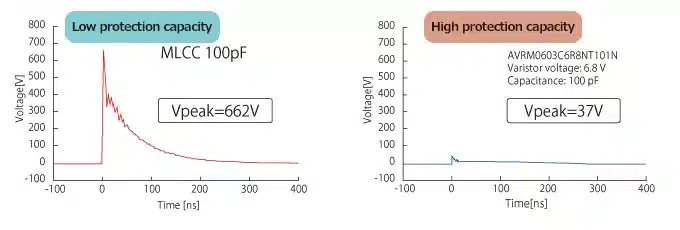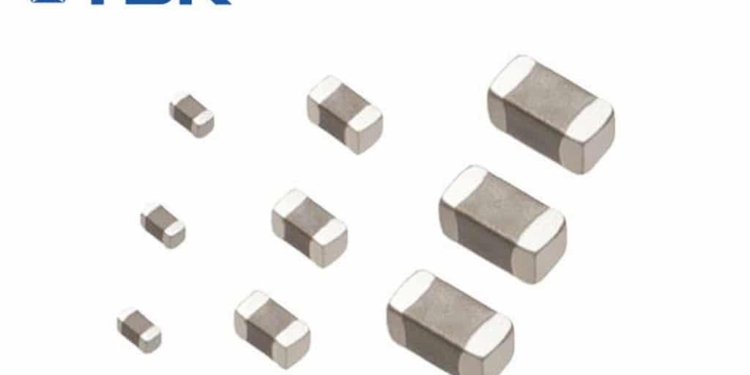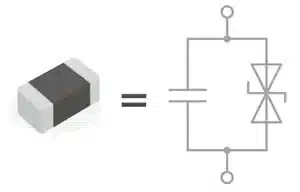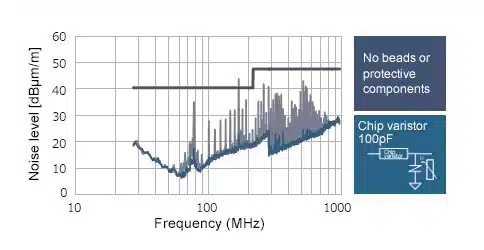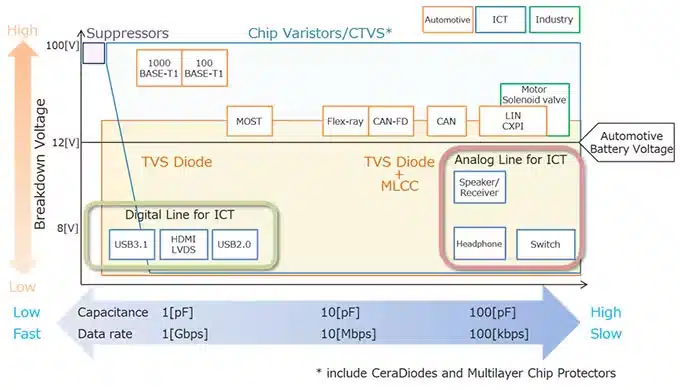This technical article written by TDK discusses the optimal chip varistor applications for ESD countermeasures.
Characteristics of Chip Varistors
Chip varistors have both surge absorption capabilities and noise suppressing effects.
The following figure shows the equivalent circuit of a chip varistor.
The chip varistor is equal to the one where the capacitor is connected parallelly to the two Zener diode elements that are connected opposite to each other.
Equivalent to the circuit where the two Zener diode elements are connected opposite to each other and the capacitor is connected parallelly. The current-voltage characteristics are symmetric and have no polarity.
Chip varistors achieve both noise suppression and ESD suppression.
Optimal Applications for Chip Varistors
The following figure shows the application field of the various components for ESD countermeasures. This article introduces excellent applications especially for chip varistors.
The optimal applications for chip varistors are in the blue region.
Optimal Applications for Multilayer Chip Varistors
Audio circuits (Headphone, Mic, Speaker)
TVS diodes are sources of noise in audio lines, and increasing output to raise volume degrades sound quality. Chip varistors are the optimal solution in audio lines.
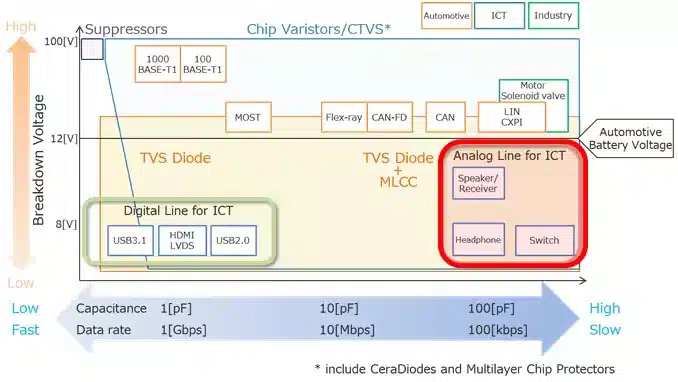
Countermeasures against counter electromotive force (Solenoid valve, Motor, etc.)
TDK’s chip varistors feature excellent resistance to repeated surges, and products with characteristics that compare well with zener diodes are also available as automotive grade AVR series.
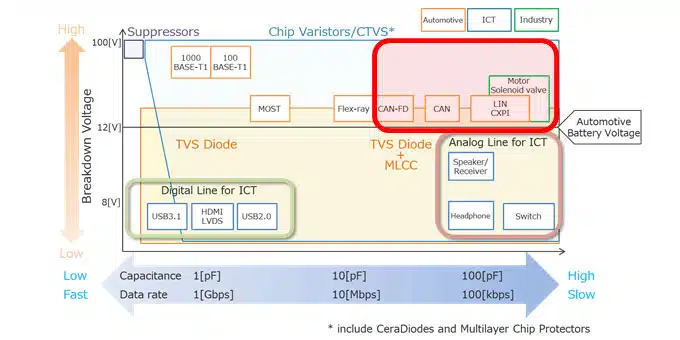
Comparison between chip varistors and MLCCs as ESD protection
When the capacitance of the protection components is in the 100pF range, the ESD protection capacity of chip varistors becomes extremely high compared to multilayer chip capacitors.
